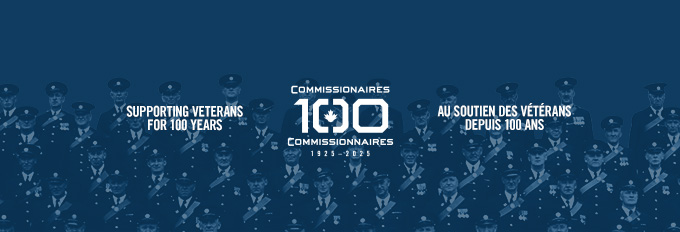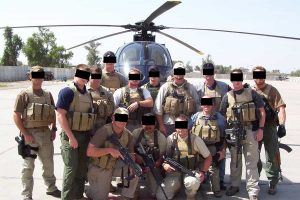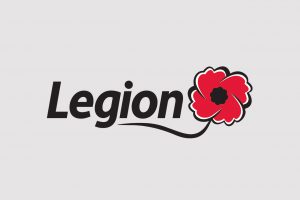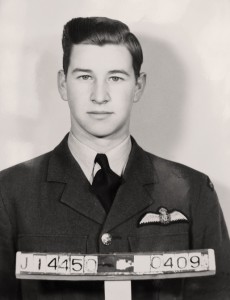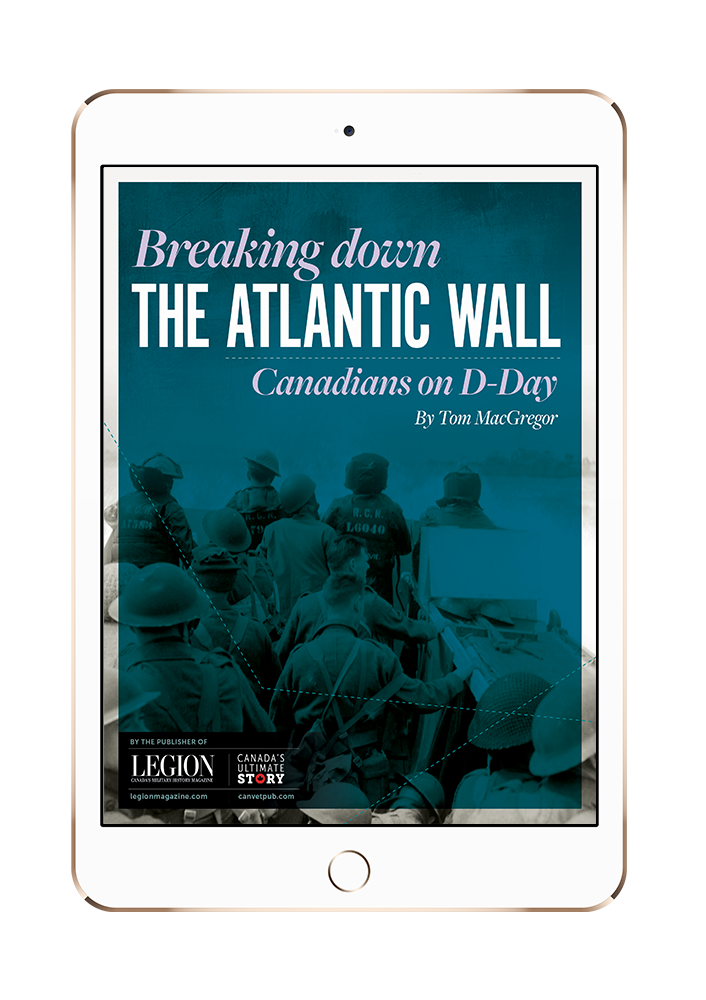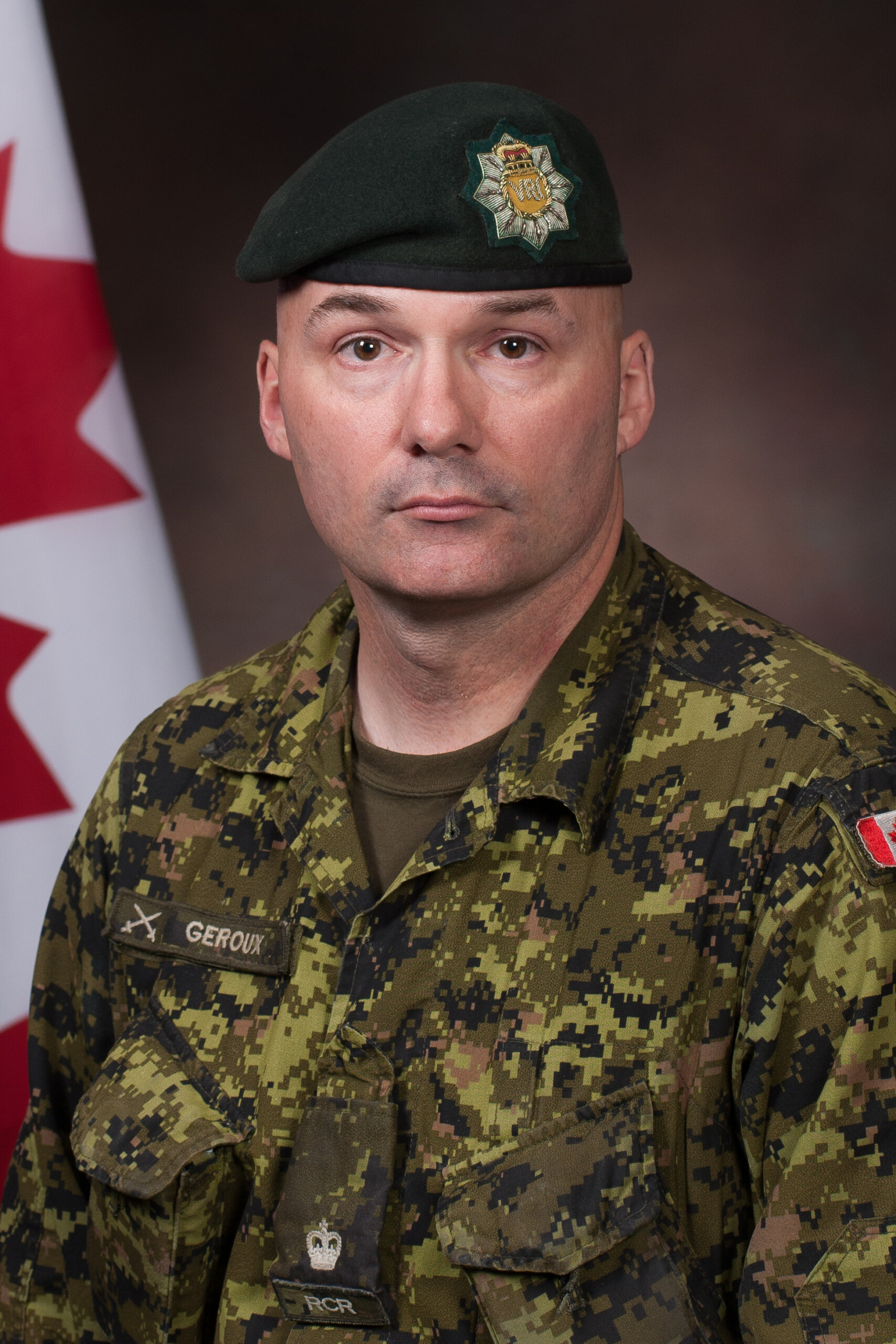
[CAF]
Geroux is recognized as a leading voice in urban warfare training. His expertise extends to academics, having received an master’s degree in military history from the University of New Brunswick. His thesis discussed the 1943 Battle of Ortona.
Here, Geroux offers his insights on the world of urban operations.
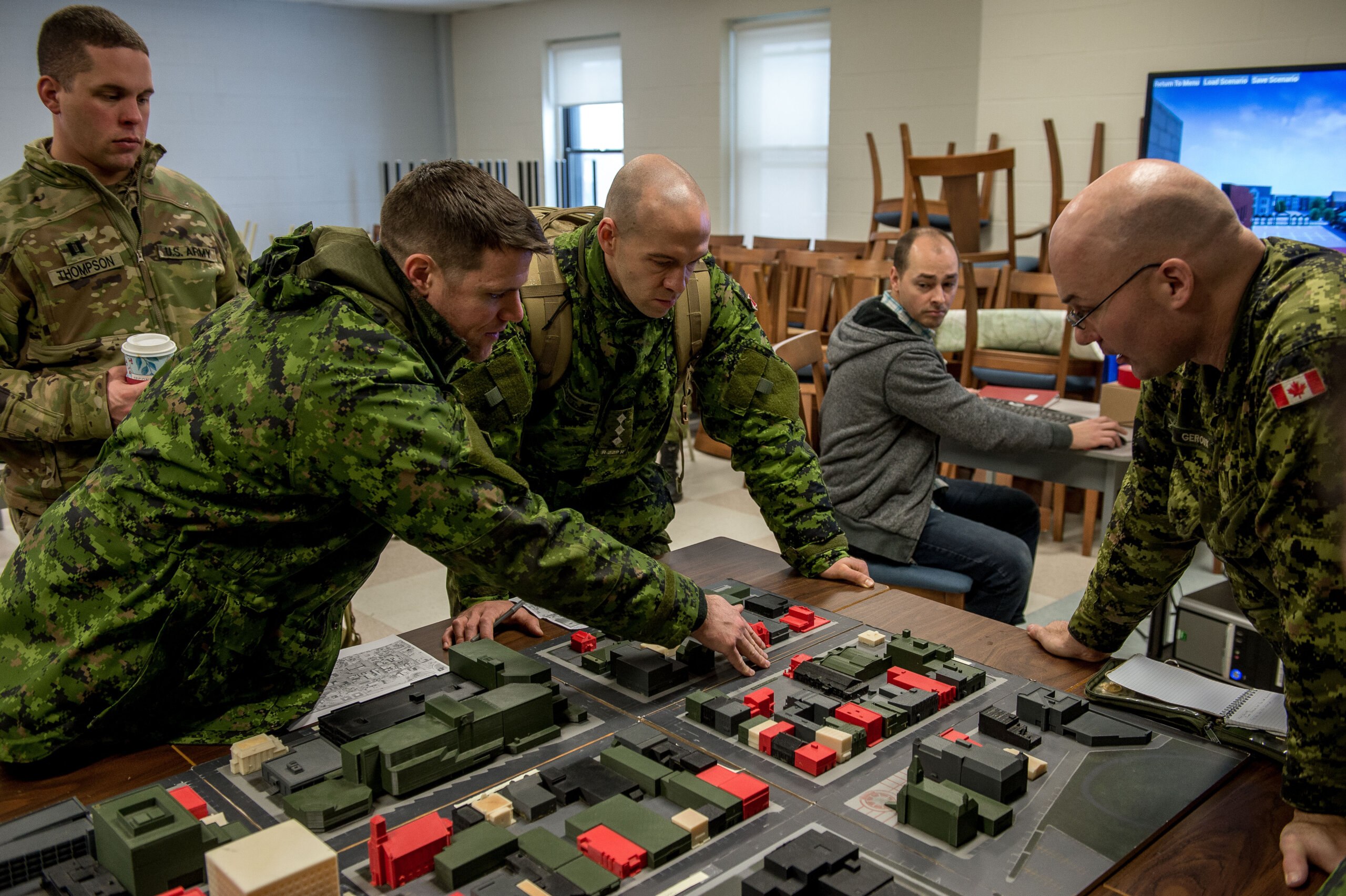
Students from the Canadian Armed Forces’ Combat Team Commanders Course use a 3-dimensional model of downtown Fredericton, to brief Major Geroux (right). [CAF]
My paternal grandfather was a firefighter in the Royal Canadian Navy during the Second World War, based out of St. John’s, Nfld., and my maternal grandfather, born and raised in the United States, enlisted in the U.S. Marine Corps and fought the Japanese in the Pacific. I remember being six years old when I wandered into my maternal grandfather’s office, seeing his wartime photos on the wall and the Japanese sword he’d plucked off a dead enemy officer on Okinawa. From then onward, I wanted to read military history books, and I haven’t stopped since.
It was after my second year at Wilfrid Laurier University that I realized it was all theory, no practice. I decided I’d finish my studies, get my degree, and then join the military, believing I’d eventually become a teacher or university professor. Instead, I fell in love with the institution, and I’ve now been there for 29 years.
On the destination of his career path
I was a platoon commander with 3rd Battalion, The Royal Canadian Regiment, when it returned from Bosnia-Herzegovina. Our commanding officer, Lieutenant-Colonel Denis Thompson—a now-retired major-general—launched the battalion on an urban operations training package, where we learned to clear rooms, walk down hallways and run across streets. I was bit by the [urban operations] bug.
I was subsequently posted as the operations officer for The Argyll and Sutherland Highlanders of Canada (Princess Louise’s) in Hamilton, co-ordinating the urban operations training for three years. My passion only grew in that time.
On April 15, 2012, I was in Kabul during a nine-month tour in Afghanistan when about 50 to 60 insurgents attacked the NATO and Afghan National Army camps within the city itself. There I was, safely ensconced inside a bunker and taking turns pulling guard duty with the bullets, rocket-propelled grenades and helicopter gunships flying over my head. I remember thinking, “This is not good. I’m in the middle of a real urban operations battle, and as a major, I’m not supposed to be clearing rooms; I know that. So, what am I supposed to be doing at that level?”
I decided that if I got out of there alive, if I managed to get back home, I would develop myself in the planning, tactics and sustainment of urban operations at the company, battalion, brigade and division levels. That’s exactly what I did—and I now have 23 years of professional, personal, practical, instructional, academic, historical and doctrinal urban operations experience, knowledge and writing.
On what particular battle stands out for him
Being an urban warfare historian and urban operations instructor, there was always something about Ortona—a renowned Canadian urban battle—that intrigued me.
One standout moment is when Captain Bill Longhurst [of The Loyal Edmonton Regiment] decided to start mouse-holing [the tactic of blasting through adjoining rooms or buildings] on Dec. 22, 1943. That’s the turning point of the battle. It has to be noted, however, that the Canadians did not invent mouse-holing at Ortona.
The battle also produced several important lessons. One is that operational patterns cannot lead to dogmatic assumptions. By this, I mean that throughout the Sicily and Italian campaigns, the Germans held a town or city for 24 to 48 hours before withdrawing to new defences. That was, of course, until Ortona. British Eighth Army initially assured 1st Canadian Division that the enemy would pull back after one or two days, but we now know that not to be true. In reality, the Germans instead made Ortona the eastern anchor point of their Gustav Line.
Another lesson is that commanders, planners and historians must focus on the fighting outside, as well as inside, a city because both influence each other. Ultimately, if you can isolate a city, you can stop an adversary from being resupplied and reinforced, which then has the potential to shorten a battle.
“Amateurs talk tactics, professionals talk logistics” is the third lesson learned. The bottom line is unless you know how to get the bullets and beans forward and the casualties back to the rear, you should probably go back to the drawing board. For example, decades later, there were so many Russian failures during the First Battle of Grozny [of the 1994-96 First Chechen War]. But the Canadians at Ortona and the Americans at the 1944 Battle of Aachen were success stories for logistics.
There were many other lessons, from combined arms efforts to the improvisation of certain weapon systems. However, I’ll highlight just one more. There’s an urban legend—pun intended—that defenders have the advantage in urban operations. But it’s not necessarily the case. In theory, if the attackers utilize a good operational plan and good tactics, techniques and procedures, the defenders usually lose.
That’s what happened in Ortona.
On himself
Every year, every month, every week, every day, I still learn something new about how to conduct urban operations. This environment is so complex and challenging that I don’t believe anybody can truly be an expert on it. That’s why I consider myself a passionate student of urban operations rather than an expert per se. What do I want written on my tombstone? Perhaps that through my teachings and writings, I was able to educate people on urban operations and save a few lives.
This abridged interview has been edited for brevity and clarity.
Advertisement



